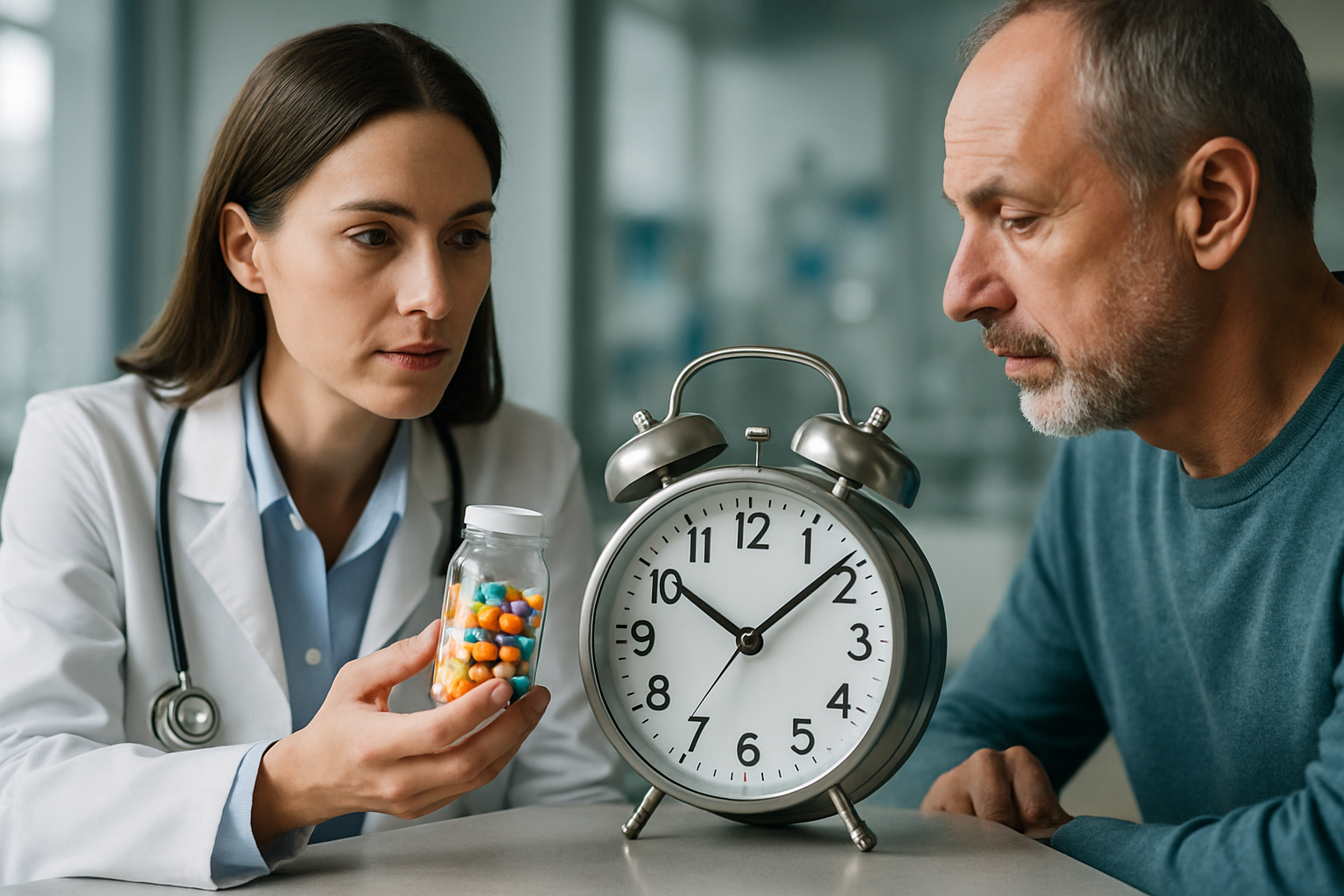Chronopharming: Optimizing Medication Effectiveness Through Timing
Have you ever wondered if the time you take your medication could impact its effectiveness? Imagine a world where simply adjusting when you take your pills could dramatically improve your health outcomes. Welcome to the fascinating realm of chronopharming, where the intersection of our body's natural rhythms and medical science is revolutionizing how we approach treatment.

Our internal biological clock, regulated by the suprachiasmatic nucleus in the brain, orchestrates a complex symphony of hormonal and metabolic changes throughout the 24-hour cycle. These fluctuations affect various bodily functions, including blood pressure, heart rate, liver metabolism, and immune system activity. By aligning medication timing with these natural rhythms, chronopharming aims to enhance drug efficacy while minimizing side effects.
Historical Context and Key Developments
The roots of chronopharming can be traced back to ancient medical practices, where healers observed patterns in symptom severity and treatment effectiveness at different times of day. However, it wasn’t until the mid-20th century that scientific research began to explore these temporal relationships systematically.
In the 1960s, Franz Halberg, often considered the father of chronobiology, conducted groundbreaking studies on biological rhythms and their implications for medicine. His work laid the foundation for chronotherapeutics, demonstrating that the timing of drug administration could significantly impact treatment outcomes.
The field gained momentum in the 1980s and 1990s with advancements in chronopharmacology, the study of how drugs interact with biological rhythms. Researchers discovered that many medications exhibited time-dependent variations in their pharmacokinetics and pharmacodynamics, opening new avenues for optimizing treatment strategies.
Current Applications and Research
Today, chronopharming is being applied across various medical disciplines, with promising results in several areas:
Cardiovascular Health
Studies have shown that taking blood pressure medications in the evening, rather than in the morning, can lead to better blood pressure control and reduced risk of cardiovascular events. This is because blood pressure naturally dips during sleep, and evening dosing helps maintain this beneficial pattern.
Cancer Treatment
Chronochemotherapy, the timed administration of cancer drugs, has shown potential in improving treatment efficacy and reducing side effects. By delivering chemotherapy drugs when cancer cells are most vulnerable and normal cells are less susceptible to damage, researchers have observed enhanced tumor suppression and decreased toxicity.
Asthma Management
Asthma symptoms often worsen at night due to circadian variations in lung function. Administering bronchodilators and corticosteroids in the late afternoon or evening has been found to provide better symptom control compared to morning dosing.
Rheumatoid Arthritis
For patients with rheumatoid arthritis, taking anti-inflammatory medications in the evening can help alleviate morning stiffness and pain, as these symptoms typically peak in the early hours of the day.
Challenges and Considerations
While chronopharming holds great promise, several challenges must be addressed for widespread implementation:
Individual Variability
People’s circadian rhythms can vary based on factors like age, genetics, and lifestyle. Developing personalized chronopharming protocols that account for these differences is crucial for optimal results.
Compliance and Convenience
Adhering to specific medication timing can be challenging for patients, especially those with complex treatment regimens. User-friendly technologies and patient education are essential to improve compliance.
Need for More Research
While evidence supports chronopharming for certain conditions, more comprehensive studies are needed to establish its efficacy across a broader range of diseases and medications.
The Future of Chronopharming
As research in chronobiology and chronopharmacology continues to advance, the future of chronopharming looks promising. Emerging technologies and approaches are set to revolutionize this field:
Wearable Devices and AI
Smart watches and other wearable devices equipped with artificial intelligence could monitor individual circadian rhythms and provide real-time recommendations for optimal medication timing.
Chronodelivery Systems
Innovative drug delivery systems are being developed to release medications at specific times, aligning with the body’s natural rhythms without requiring multiple doses throughout the day.
Precision Medicine
Integrating chronopharming principles with genetic and metabolic profiling could lead to highly personalized treatment strategies, maximizing efficacy while minimizing side effects.
Chronopharming Insights
• The effectiveness of statins, commonly prescribed for cholesterol management, can be enhanced by evening administration due to increased cholesterol synthesis at night.
• Pain perception fluctuates throughout the day, with many people experiencing heightened sensitivity in the morning. Timing pain medication accordingly can improve symptom management.
• Heartburn tends to worsen at night due to reduced esophageal motility and decreased saliva production. Taking antacids before bed can provide better relief.
• The body’s ability to metabolize glucose varies throughout the day, affecting insulin sensitivity. Adjusting diabetes medications to these rhythms may improve blood sugar control.
• Seasonal variations in our circadian rhythms can impact medication effectiveness, highlighting the need for potential dosage adjustments during different times of the year.
As we continue to unravel the intricate relationship between our body’s natural rhythms and medical treatments, chronopharming stands poised to transform healthcare. By harnessing the power of timing, we can optimize medication effectiveness, reduce side effects, and ultimately improve patient outcomes. The future of medicine may not just be about what we take, but when we take it.





